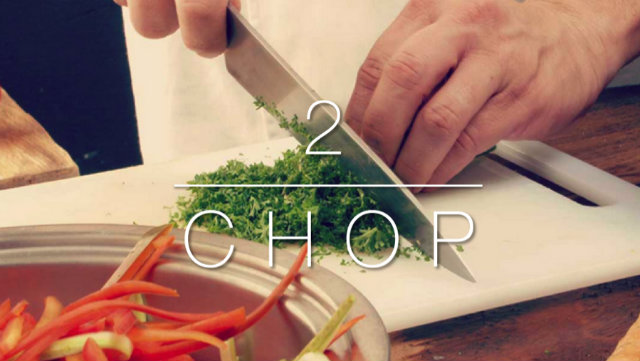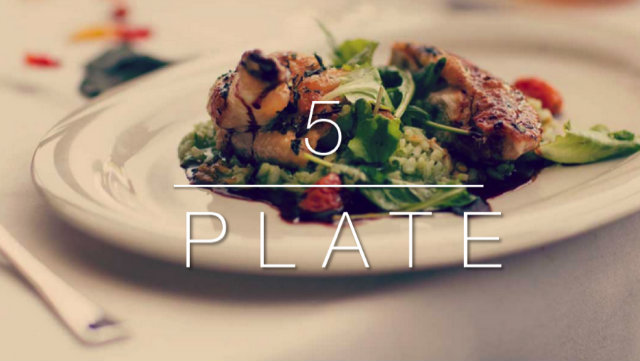 Reading Time: 6 minutes
Reading Time: 6 minutesIn science, an “elegant theory” is one that explains a lot with very little. It’s simple and powerful. For instance, Einstein’s most famous equation E=MC2 presents in just five symbols what amounts to a doctorate-level understanding of the relationship between energy and mass.
In cooking, a dish is said to be elegant when it uses as few seasonings as possible to achieve jaw-dropping results. If taste balancing is how to make dishes spectacular, then the use of flavor notes is what makes them sublime. This is what you’re going to learn to do right now.
An Explanation of Flavor Notes
In our last lesson, we used the metaphor of painting with four primary colors to explain how to use tastes — salty, sour, sweet, bitter, and umami — to wow your mouth. This week, we’ll use music as our metaphor. Unlike the musician, who must master twelve notes, the culinary artist, thankfully, needs only three: low, mid, and high.
- Low notes are the flavors that hit you in the back of the mouth. They are your deep, meaty, heavy, smoky, warming flavors. Think winter foods like red meats, root vegetables, bitter greens, cinnamon, nutmeg, and smoked spices like chipotle.
- Mid notes are flavors that hit in the middle of the mouth. They are your neutral, bland, filler-type flavors. Think unseasoned grains, chicken, fish, and tofu.
- High notes hit in the top of the mouth. These are bright, effervescent, sparkly flavors. Think summer foods like fruits, soft veggies, lettuce, fresh herbs, hot peppers, and citrus.
Playing the flavor notes is remarkably easy, so you will be making your dishes sing in no time. What does take time is the development of your palate.
Developing your palate will be a lifelong pursuit and a delicious one, but it comes with a potentially dangerous side effect — it can make you a food snob. It can absolutely wreck your appreciation of a Taco Bell chalupa, but if our goal is to eat healthier, maybe that’s okay.
The 3 Rules of Flavor Notes
1. If It’s Low, Go High
If the anchor of your dish is predominantly a low note, counterpoint it with a high note. Think about ground lamb with raisins — a deep and meaty dish with bursts of sweetness. This is like having a great rhythm track and then playing lead guitar over it.
2. If It’s High, Go Low
If your dish is predominantly high, counter it with a low note. For instance, what could you add to a summer salad? Avocados add a dimension that high- or mid-note accents could not accomplish, just like pumping up the bass on a track that has a lot of treble.
3. If It’s Mid, Go Low and High
If your dish is predominantly mid, hit it with both low and high notes. Chicken, for instance, is better with mushrooms (low) and peppers (high) rather than just mushrooms or just peppers. This is like playing a great bass line and having both drums and guitar kick in.
Skill Drill: Learn to Play Your Flavor Notes
In this lesson’s skill drill, we are going to make three meals, one for each note.
Ingredients:
- 3 servings of high-note produce — fruits, summery vegetables
- 3 servings of low-note produce — root veggies, bitter greens, mushrooms
- 3 servings of meat or meat substitute
Note: for guidance on what constitutes a “serving size,” see lesson one.
Seasonings:
- Salt
- Pepper
- Fat of choice
- Onion
- Garlic
- 1 thing sour — citrus, vinegar
- 1 thing spicy — ground or fresh hot peppers
- 1 thing savory — spices, dried or fresh herbs, nuts, seeds, etc.
As you chop through your ingredients, assemble them into your three meals in this way:
- Meal One: 2 high-note produce, 1 mid or low meat or meat substitute
- Meal Two: 2 low-note produce, 1 mid or low meat or meat substitute
- Meal Three: 1 high-note produce, 1 low-note produce, 1 mid or low meat or meat substitute
Chop in this order:
- Chop your produce
- Chop and/or mince seasonings
- Change cutting boards
- Chop your meat or meat substitutes
Directions:
- Set your oven to 400 degrees.
- Hit all your meals with The Starting 5 as you see fit — salt, pepper, fat of choice, onion, and garlic.
- Use any and all of the seasoning strategies in the previous lessons.
In addition, do the following:
- Meal One: This meal is high, so favor seasonings that are low.
- Meal Two: This meal is low, so favor seasonings that are high.
- Meal Three: This meal is low and high, so add an equal mix of low and high seasonings
Note: for guidance on seasonings, see lessons one, six, and seven.
If you want to taste and adjust the balance throughout the cooking process, your best bet is to cook your ingredients on the stove-top. Therefore, you might consider the stove-top for the dish you are least confident in. (You must not taste a dish with meat in it until the meat is fully cooked.)
Note: For a refresher on how to gauge “doneness,” read lesson one.
Taste test your three fabulous meals, then choose one to eat right now and pack up the other two for future meals. How did they all turn out? Are you getting a sense of flavor notes and their impact? What would you do differently next time?
This is our final lesson in my home cooking boot camp. If you’ve completed all eight, congratulations! And if you haven’t, then consider working your way through the curriculum so you can make your kitchen a vibrant and efficient part of your healthy eating process. You can take control of your food and it doesn’t have to be complicated.
Ready for more? Dive into the rest of the lessons in this series:
- The 5 Moves to Cooking Everything: Home Cooking Boot Camp Lesson 1
- Knife Skills and Stir Fry: Home Cooking Boot Camp Lesson 2
- The 3 Essential Cooking Methods: Home Cooking Boot Camp Lesson 3
- How to Make Multiple Meals at Once: Home Cooking Boot Camp Lesson 4
- How to Organize Your Kitchen for Speed: Home Cooking Boot Camp Lesson 5
- The Power of Flavor Profiles: Home Cooking Boot Camp Lesson 6
- The Secret Tool of Taste Balancing: Home Cooking Boot Camp Lesson 7













